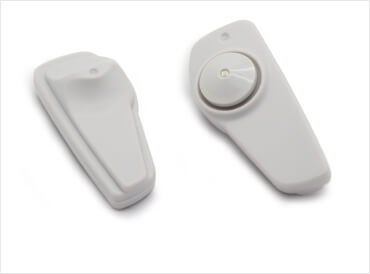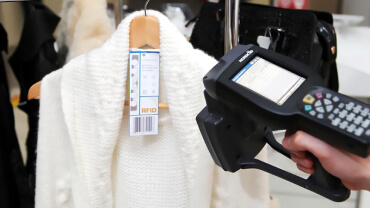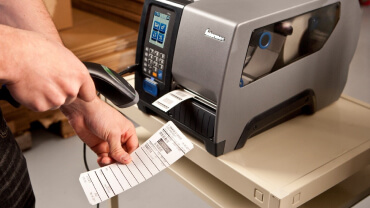Item Level RFID
Many businesses and companies used to spend a lot of time and enormous manual labor to manage the assets with their serial numbers and spreadsheets. They also were tracking equipment with their barcode identifiers. Nowadays many businesses successfully adopted Radio Frequency identification technology and started to use an RFID tracker that automatically transmits data from a tag to a reader. RFID can provide accurate and valid tracking information for both mobile and fixed assets.
To succeed in the management of the supply chain and to track items for inventory control, many agencies generally practice item-level RFID. This approach involves tagging separate inventory pieces, as opposed to tagging cartons or pallets of items.


Item Level RFID
Many businesses and companies used to spend a lot of time and enormous manual labor to manage the assets with their serial numbers and spreadsheets. They also were tracking equipment with their barcode identifiers. Nowadays many businesses successfully adopted Radio Frequency identification technology and started to use an RFID tracker that automatically transmits data from a tag to a reader. RFID can provide accurate and valid tracking information for both mobile and fixed assets.
To succeed in the management of the supply chain and to track items for inventory control, many agencies generally practice item-level RFID. This approach involves tagging separate inventory pieces, as opposed to tagging cartons or pallets of items.
RFID Tags

These labels are a part of the tracking system. Through radio frequency, they explore, recognize, track and interconnect with assets and people. These intelligent labels may contain such data as codes, short descriptions, and even pages of information. To provide “secure communication”, it may also include security features for a high level of certification and authentication.
Generally, there are passive and active types of them. Passive ones have small sizes and are lightweight. They have a shorter read range and are widely spread in such areas as management of supply chain and inventory, door access control, healthcare, travel and entertainment, retail (mainly apparel), production and industry, logistics, brand protection, etc.
As active ones require their source of power and transmitter, they are not as common as passive ones. They are large in size, durable, rough, and high in price. Constant medical monitoring can be an example of an active type.
To specify these identifiers by their radio frequencies, you are to find the following categories:
- Low (LF): This system is often operated in applications for access control and livestock monitoring. Its read range is up to 10 cm.
- High (HF): These systems have a read array from 10 cm to 1 m. User experience applications practice them. You may meet them on electronic tickets and for payments.
- Ultra-high (UHF): Their read range is up to 12 m. These systems are convenient for being examined in parking garages, door access, in commerce inventory tracking, and asset management. For example, RFID badges are widely used to provide secure access to the employees into their working facilities.
Inlay Tags
To meet the challenging requirements of radio frequency identification tagging, there are various UHF inlays available. They differ from each other in their formats, memories, frequencies, sizes, materials, and colors. They provide high levels of performance for the brands and combine the main features of modern integrated circuit (IC) technologies.
In our company, you are to meet inlay design experts that work in specially equipped laboratories. The inlays have all the main standards of the global market and may compete with their functionality, design, durability. Their main features are longer read range and faster reading. Moreover, there are multiple applications per single inlay and they are globally standardized via relevant certifications.

Hard Tags

Hard identifiers are here to provide the requirements of any business environment. This means that they are resistant to extreme conditions, extreme temperatures, and any environment. Besides they can hold out dust, chemicals, temporary immersion in water, and mechanical stresses.
Generally, there are three types of them:
UHF Hard Tags: they can be in different materials and operate in extreme temperatures. They may be directly attached to the metal surface. For example, seal identifiers and the ones for monitoring the assets that are sensitive to temperature.
HF/NFC Hard Labels
Chips
While applying for these categories, you have to consider such factors as reading range, size limits, type of application, and material of a tagged object.
Sustainable Tags
This category can also be called green and intelligent labels. The modern world requires the production of things that have a minimum harmful impact on the planet and its residents. So, the companies try to grow with the minimal consumption of natural resources and by reducing many types of pollution.
These sustainable labels are free from plastic, as they are made from recycled plastic and there is no plastic inside the inlay. It also has an antenna inside, but the latter is free of heavy metals. So, during the process of manufacturing less energy is used. The reduction of carbon usage is beneficial in terms of ecology. For the bonding of the chip, a little amount of glue is used.
It is recommended for the companies to adopt eco-friendly behaviors, as they can produce big volumes and top quality without overuse of natural resources. With the help of our company, you can get the research of the entire supply chain. Consequently, you will be suggested the most sustainable methods and materials be utilized to reach ecologically accepted and beneficial behavior.

RFID solutions for the new era of commerce
Modern companies try to implement radio frequency identification technology to get higher efficiency in their work. By the adoption of this contactless technology, they add accuracy, speed, and security to the expanding range of RFID applications.
As a businessman, you might need this for different reasons. Generally, it is used for promotional and trade purposes. To be at the top, you should have a professional approach to everything. Printing is not an exception.
Living in a digital world greatly changed business thinking. Having access to databases allows us to make important decisions. Thus, artificial intellect works instead of us based on the material that we give him.


